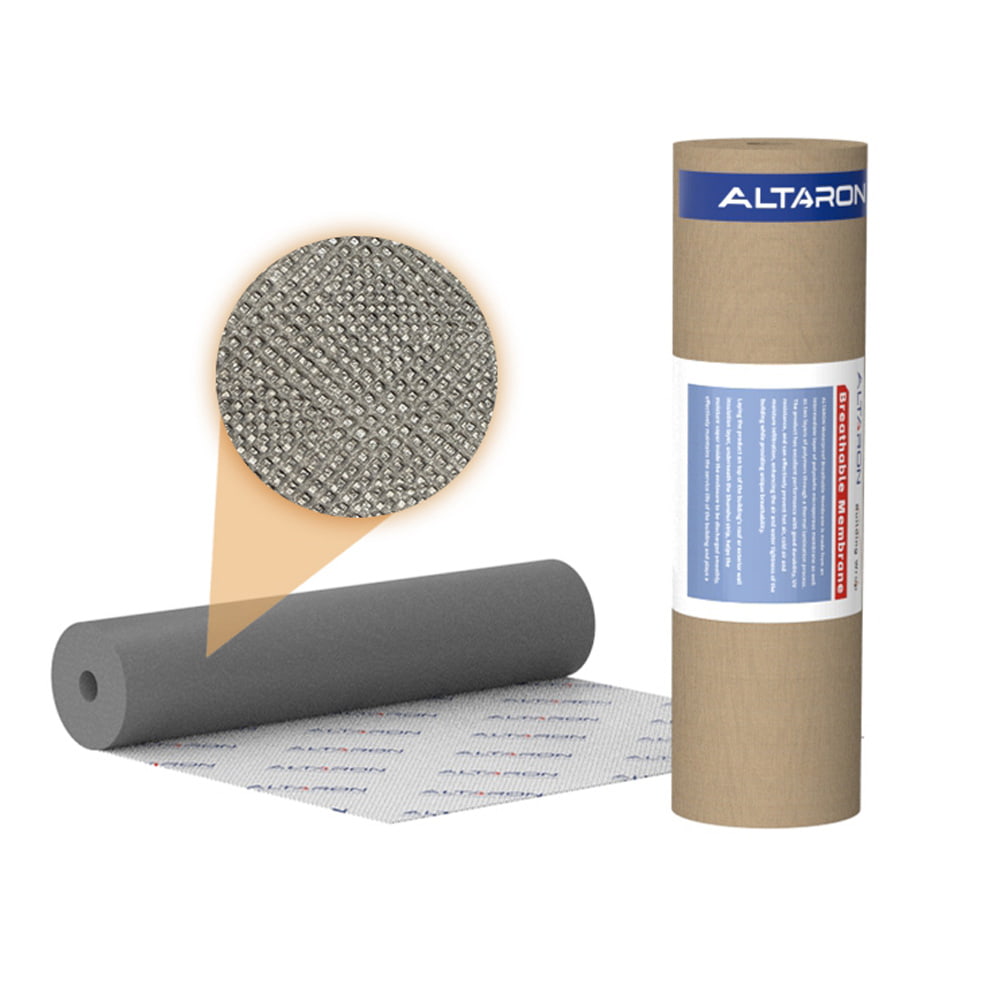Top Reasons to Choose Nonwoven Fabrics for Construction and Civil Engineering
2025-09-18
Introduction to Nonwoven Fabrics in Construction
Nonwoven fabrics are increasingly becoming an essential material in modern construction and civil engineering projects. These versatile materials are made by bonding fibers together using mechanical, thermal, or chemical processes, without the need for traditional weaving or knitting. Nonwoven fabrics offer numerous benefits in various aspects of construction, including durability, cost-effectiveness, and environmental sustainability. They are widely used for insulation, moisture control, and reinforcing structures, making them an ideal choice for both residential and commercial buildings.
Waterproof Breathable Membrane T80
What are Nonwoven Fabrics?
Nonwoven fabrics are engineered textiles that are bonded together through processes such as heat, pressure, or adhesives. Unlike traditional woven fabrics, nonwoven materials do not require threads or yarns, making them a cost-effective and efficient option for construction projects.
Applications of Nonwoven Fabrics in Civil Engineering
- Road Construction: Used as geotextiles for soil stabilization and erosion control.
- Drainage Systems: Employed for filtration and separation layers in drainage applications.
- Building Insulation: Used for thermal and acoustic insulation in buildings.
Advantages of Nonwoven Fabrics in Construction Projects
Nonwoven fabrics provide a wide range of advantages in construction projects, making them a preferred choice for contractors and engineers. Their ability to improve performance, reduce costs, and enhance construction speed are just a few of the reasons why nonwoven fabrics are gaining popularity in the industry.
Cost-Effectiveness and Easy Installation
One of the most significant advantages of nonwoven fabrics in construction is their cost-effectiveness. These materials are generally more affordable than traditional building materials, such as metal or fiberglass insulation. Additionally, their lightweight nature and ease of installation reduce labor costs and project timelines, making them an excellent choice for budget-conscious construction projects.
- Lower material costs compared to traditional alternatives.
- Quick and simple installation that reduces labor costs.
- Ideal for projects with tight deadlines and budgets.
Durability and Weather Resistance
Nonwoven fabrics are highly durable and resistant to various environmental stressors. They offer excellent resistance to water, UV rays, and extreme temperatures, which contributes to the longevity of buildings and other infrastructure projects. These fabrics are designed to withstand harsh weather conditions, making them suitable for both indoor and outdoor applications.
- Water-resistant properties that prevent moisture infiltration.
- UV resistance to avoid degradation from sun exposure.
- Resistant to wear and tear, extending the life of construction materials.
Nonwoven Fabrics for Specialized Construction Uses
Nonwoven fabrics have specialized applications in construction, providing solutions for moisture control, waterproofing, insulation, and more. These fabrics are integral to enhancing the overall performance of buildings, improving energy efficiency, and reducing the environmental impact of construction projects.
Waterproofing and Moisture Control
Nonwoven fabrics are commonly used in construction for moisture control and waterproofing. They are placed between layers of building materials to prevent water infiltration, protect against mold growth, and maintain the structural integrity of buildings.
- Effective barrier against moisture and water damage.
- Prevents mold and mildew formation, especially in basements and foundations.
- Improves the longevity of buildings exposed to wet environments.
Thermal and Acoustic Insulation
Nonwoven fabrics also serve as excellent thermal and acoustic insulators, helping to regulate temperature and reduce noise transmission. By using these fabrics, buildings can achieve better energy efficiency, reducing heating and cooling costs while improving overall comfort.
- Enhance indoor comfort by regulating temperature.
- Reduce noise pollution and improve acoustic quality in buildings.
- Contribute to energy savings by improving thermal insulation.
Environmental and Sustainability Benefits of Nonwoven Fabrics
Nonwoven fabrics are a sustainable choice for construction projects, as they are often made from recycled materials and can be reused or recycled at the end of their life cycle. These fabrics help reduce waste and support eco-friendly building practices, making them an essential part of green construction initiatives.
Eco-friendly Materials for Green Building Projects
Nonwoven fabrics are increasingly being used in sustainable construction practices due to their eco-friendly properties. Many nonwoven fabrics are made from recycled fibers, making them a great choice for green building projects aiming to reduce environmental impact.
- Made from recycled materials, reducing the need for virgin resources.
- Contributes to LEED (Leadership in Energy and Environmental Design) certification for buildings.
- Reduces carbon footprint in construction projects.
Recycling and Reusability in Construction
In addition to their use in construction, nonwoven fabrics can be recycled at the end of their life cycle, contributing to a circular economy. This recycling capability minimizes waste and encourages sustainable practices in the construction industry.
- Recyclable at the end of their life cycle, minimizing landfill waste.
- Reduces environmental impact by repurposing materials.
FAQ
What are the benefits of using nonwoven fabrics in construction projects?
Nonwoven fabrics provide several benefits in construction projects, including cost savings, enhanced durability, improved weather resistance, and better energy efficiency. They are also eco-friendly, supporting sustainable building practices.
Can nonwoven fabrics be used for waterproofing in construction?
Yes, nonwoven fabrics are widely used for waterproofing and moisture control in construction. They create an effective barrier against water, preventing damage to buildings and enhancing their lifespan.
How do nonwoven fabrics contribute to energy efficiency in buildings?
Nonwoven fabrics improve thermal insulation in buildings, which helps to regulate temperature, reduce energy consumption, and lower heating and cooling costs. They also offer acoustic insulation, reducing noise pollution and improving indoor comfort.


 日本語
日本語 Русский
Русский España
España عرب .
عرب .

